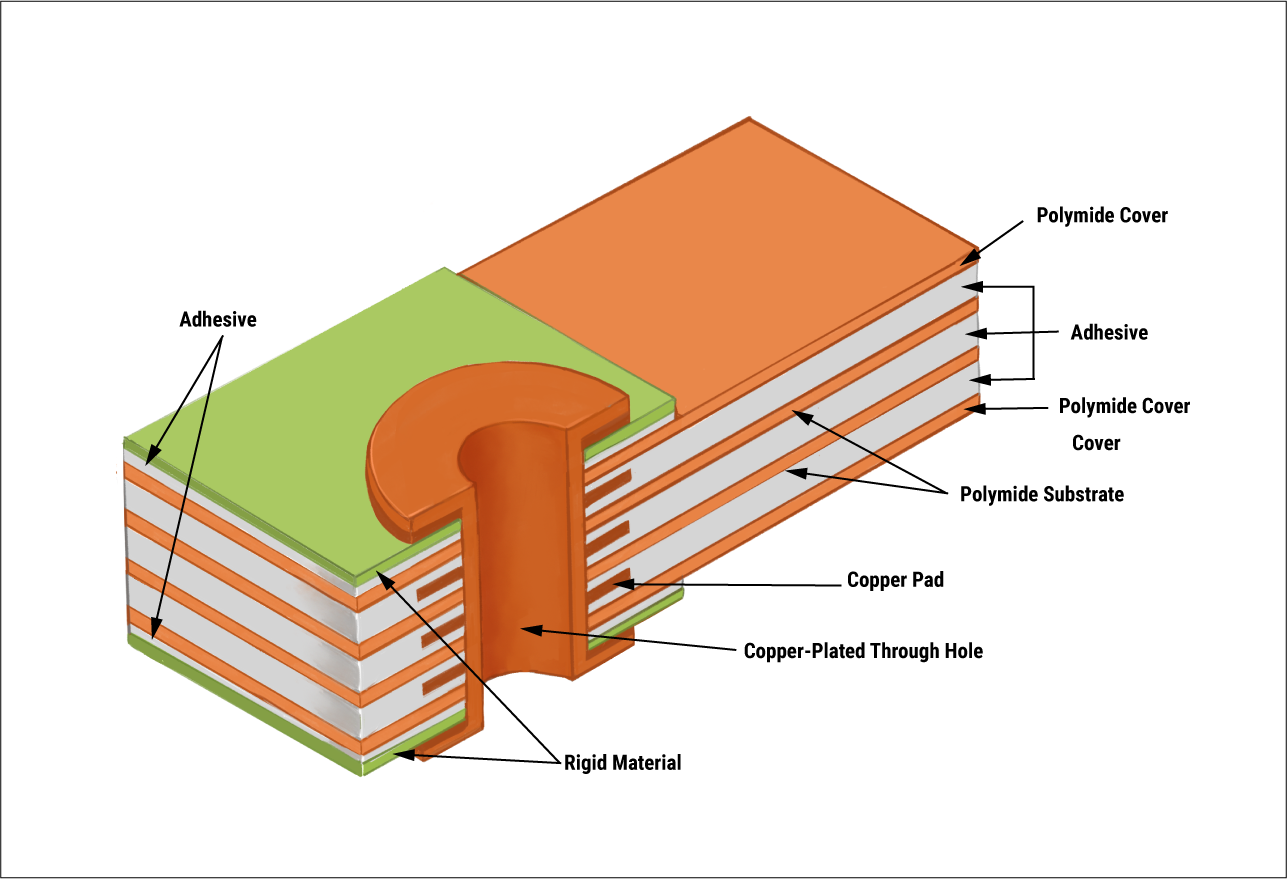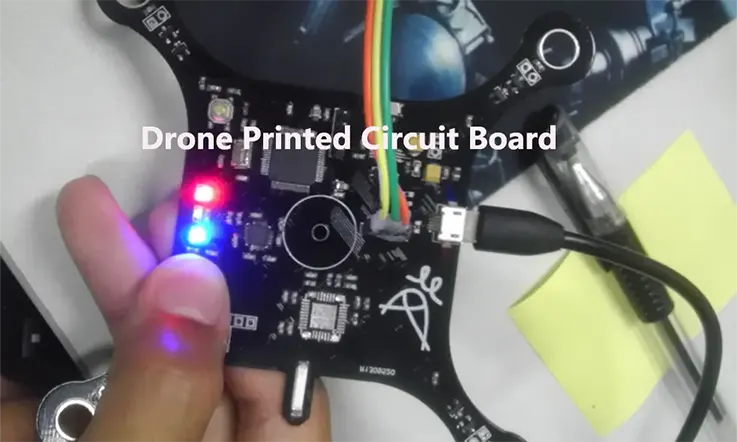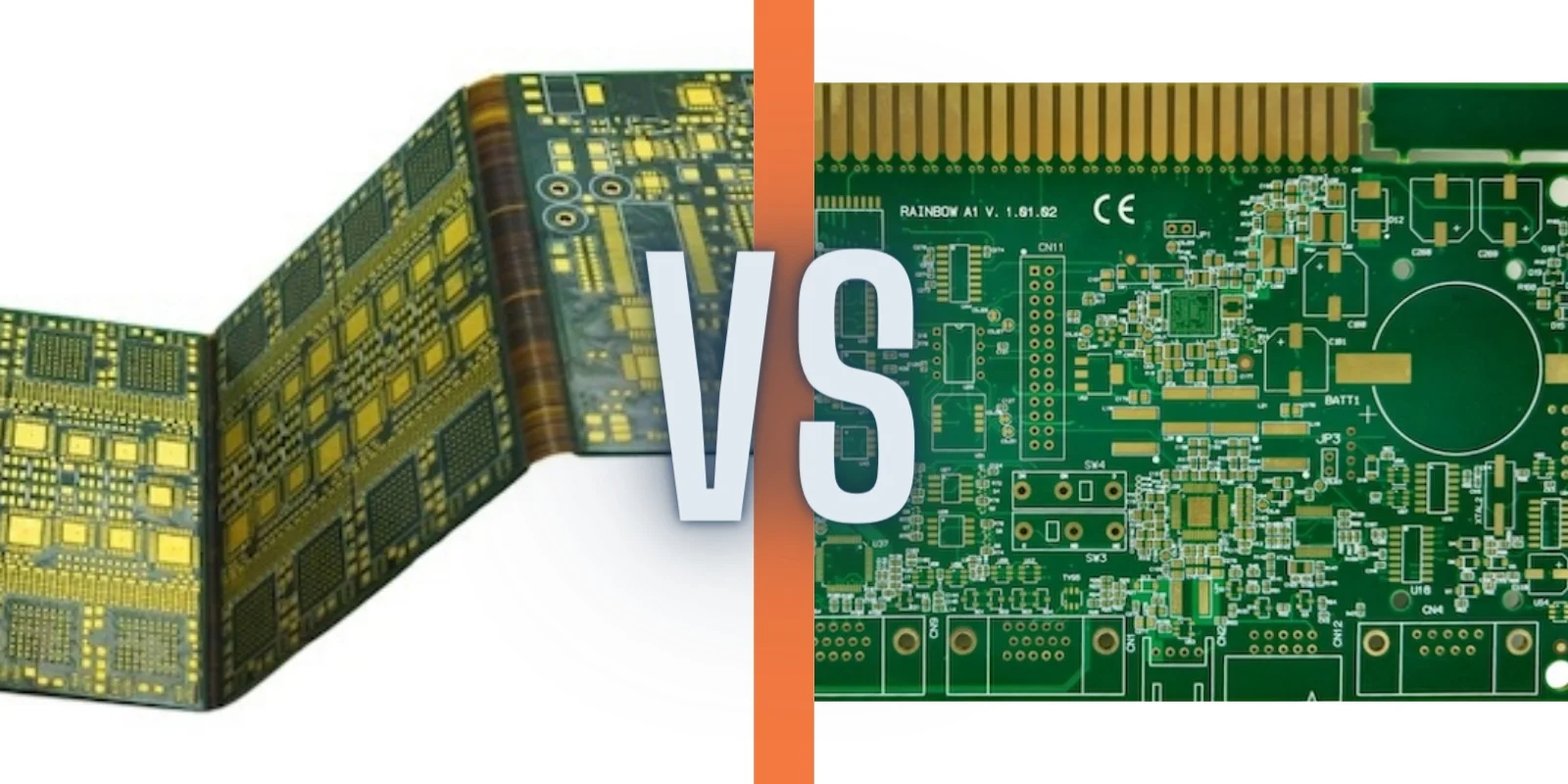In the demanding world of military technology, where reliability, durability, and compactness are non-negotiable, rigid-flex PCBs have emerged as a game-changing solution. Combining the stability of rigid boards with the adaptability of flexible circuits, rigid-flex PCBs are uniquely suited for military applications. Whether you're designing communication systems, wearable devices for soldiers, or rugged equipment for harsh environments, these boards offer unmatched performance. In this comprehensive guide, we'll explore the applications of rigid-flex PCBs, their advantages, and why they are the go-to choice for military-grade designs.
What Are Rigid-Flex PCBs and Why Do They Matter in Military Design?
Rigid-flex PCBs are hybrid circuit boards that integrate rigid and flexible sections into a single unit. The rigid parts provide structural support and house components, while the flexible sections allow the board to bend, fold, or twist to fit into tight or irregular spaces. This unique combination makes them ideal for military applications where space constraints, weight reduction, and durability are critical.
In military environments, equipment must withstand extreme conditions—think high vibrations, temperature fluctuations, and physical shocks. Traditional rigid PCBs often fail under such stress due to their lack of flexibility, while fully flexible PCBs may not offer the necessary stability for mounting components. Rigid-flex PCBs strike the perfect balance, making them a cornerstone of modern military-grade designs.

Key Applications of Rigid-Flex PCBs in Military Technology
The applications of rigid-flex PCBs in the military sector are vast and varied. Their ability to adapt to complex designs while maintaining reliability under stress makes them indispensable. Below are some of the most prominent uses in military technology:
1. Communication Systems
Military communication devices, such as radios and satellite systems, require compact and lightweight designs to ensure portability. Rigid-flex PCBs enable these systems to fit into small enclosures while maintaining high signal integrity. For instance, a typical military-grade communication device may use a rigid-flex PCB to connect multiple modules, reducing the need for bulky connectors and wiring. This can result in a weight reduction of up to 60% compared to traditional wiring harnesses, a critical factor for field operations.
2. Wearable Technology for Soldiers
Modern soldiers rely on wearable tech, such as health monitoring systems and GPS trackers, integrated into uniforms or gear. Rigid-flex PCBs allow these devices to conform to the body’s shape, ensuring comfort and functionality. Their resistance to vibration and shock—often tested to withstand forces up to 20G—ensures they remain operational during intense combat scenarios.
3. Unmanned Aerial Vehicles (UAVs)
Drones and UAVs used for reconnaissance and combat missions demand lightweight, space-efficient electronics. Rigid-flex PCBs enable 3D packaging geometries, allowing designers to fold circuits into tight spaces within the drone’s frame. This not only saves space but also enhances durability against the high vibrations experienced during flight, often exceeding 10G in turbulent conditions.
4. Missile and Weapon Systems
In missile guidance and weapon control systems, where precision and reliability are paramount, rigid-flex PCBs support high-speed signal transmission with minimal interference. Their ability to maintain impedance control—often within a tight range of ±10%—ensures accurate data transfer, even in high-stress environments with temperatures ranging from -55°C to 125°C.

Advantages of Rigid-Flex PCBs for Military-Grade Solutions
The advantages of rigid-flex PCBs make them a preferred choice for military applications. Their unique properties address the specific challenges faced by engineers designing for defense purposes. Here’s a detailed look at why these boards stand out:
1. Space and Weight Efficiency
Military equipment often operates in confined spaces, whether in a soldier’s gear or inside a missile. Rigid-flex PCBs eliminate the need for multiple connectors and cables by integrating rigid and flexible sections into one board. This can reduce the overall footprint by up to 50% and cut weight significantly, often by 40-60%, compared to traditional rigid board assemblies. For example, a handheld military radio using a rigid-flex PCB can weigh under 500 grams while maintaining full functionality.
2. Enhanced Durability and Reliability
Military environments expose electronics to extreme conditions, including shock, vibration, and temperature extremes. Rigid-flex PCBs are built to endure these challenges, with flexible layers that absorb stress and rigid sections that provide stability. They are often tested to MIL-STD-810 standards, ensuring they can handle shocks of up to 50G and operate in temperatures from -65°C to 150°C. This durability reduces the risk of failure in critical missions.
3. Improved Signal Integrity
In military applications like radar and communication systems, maintaining signal integrity is vital for accurate data transmission. Rigid-flex PCBs minimize signal loss by reducing the number of interconnects and solder joints, which are common points of failure. They can support high-frequency signals with controlled impedance, often maintaining values within ±5 ohms, ensuring reliable performance even at speeds exceeding 10 Gbps.
4. Design Flexibility for Complex Geometries
The ability to bend and fold rigid-flex PCBs allows engineers to design electronics that fit into unconventional shapes. This is particularly useful for military devices with non-standard form factors, such as curved wearable sensors or compact missile guidance systems. The 3D packaging capability can reduce assembly time by up to 30%, streamlining production for military projects with tight deadlines.
5. Cost-Effective in the Long Run
While the initial cost of rigid-flex PCBs may be higher due to complex manufacturing processes, they save money over time by reducing the need for additional components like connectors and cables. Their durability also means fewer replacements and repairs, cutting maintenance costs by as much as 20-40% over the lifecycle of military equipment.

Rigid-Flex PCB Design Considerations for Military Applications
Designing a military-grade rigid-flex PCB requires careful planning to meet stringent requirements. Here are key factors to keep in mind during the design process for optimal performance:
1. Material Selection
Choosing the right materials is critical for ensuring durability and performance. Polyimide is often used for flexible layers due to its high thermal resistance, withstanding temperatures up to 260°C. For rigid sections, FR-4 or high-Tg materials are common to provide structural strength. Military designs may also incorporate specialized laminates that meet MIL-PRF-31032 standards for added reliability.
2. Layer Stack-Up and Bend Radius
The layer stack-up must balance flexibility and rigidity while protecting critical traces. Designers should ensure the bend radius of the flexible section is at least 10 times the thickness of the flex layer to prevent cracking. For a typical 0.1 mm thick flex layer, this means a minimum bend radius of 1 mm. Over-bending can lead to trace failure, especially in high-vibration military environments.
3. Thermal Management
Military equipment often operates in extreme heat or cold, so thermal management is essential. Rigid-flex PCBs can incorporate thermal vias and heat sinks in rigid sections to dissipate heat effectively. Designers should aim for a thermal conductivity of at least 1.5 W/m·K in critical areas to prevent overheating of components during operation.
4. Compliance with Military Standards
All military-grade rigid-flex PCBs must comply with strict standards like MIL-STD-883 for environmental testing and IPC-6013 for performance specifications. These standards ensure the boards can withstand harsh conditions, such as salt fog exposure or humidity levels up to 95%, without degrading.
Challenges in Rigid-Flex PCB Design for Military Use
While rigid-flex PCBs offer numerous benefits, they come with unique challenges that designers must address to ensure success in military applications:
- Complex Manufacturing Process: The hybrid nature of rigid-flex PCBs requires precise fabrication, often increasing lead times and costs. Specialized equipment and expertise are needed to bond rigid and flexible layers without defects.
- Testing for Harsh Environments: Military equipment must undergo rigorous testing to simulate real-world conditions. This includes thermal cycling, vibration testing, and drop tests, which can reveal design flaws late in the process if not accounted for early.
- Signal Integrity at High Frequencies: As military systems push for faster data rates, maintaining signal integrity across flexible sections becomes challenging. Designers must carefully route high-speed traces to avoid crosstalk and electromagnetic interference (EMI).
By partnering with experienced manufacturers who understand military requirements, these challenges can be mitigated, ensuring high-quality and reliable rigid-flex PCBs.
Why Choose Rigid-Flex PCBs for Your Military Projects?
Rigid-flex PCBs are more than just a trend—they are a proven solution for the unique demands of military technology. Their ability to save space, reduce weight, and withstand extreme conditions makes them indispensable for applications ranging from communication systems to missile guidance. With advantages like enhanced durability, design flexibility, and improved signal integrity, they provide a compact and robust foundation for cutting-edge military designs.
At ALLPCB, we specialize in delivering high-quality rigid-flex PCB solutions tailored to meet the stringent needs of military applications. Our expertise in advanced manufacturing and adherence to military standards ensures that your projects achieve optimal performance, no matter the challenge.
Conclusion
Rigid-flex PCBs have revolutionized the way military technology is designed and deployed. By offering a compact, lightweight, and durable solution, they address the critical needs of space efficiency, reliability, and performance in harsh environments. From wearable tech to UAVs, the applications of rigid-flex PCBs in the military sector are extensive, supported by clear advantages over traditional circuit boards. As the demand for advanced, reliable electronics in defense continues to grow, rigid-flex PCB design for military use will remain at the forefront of innovation. Trust in the power of this technology to bring your military projects to life with unmatched precision and strength.



